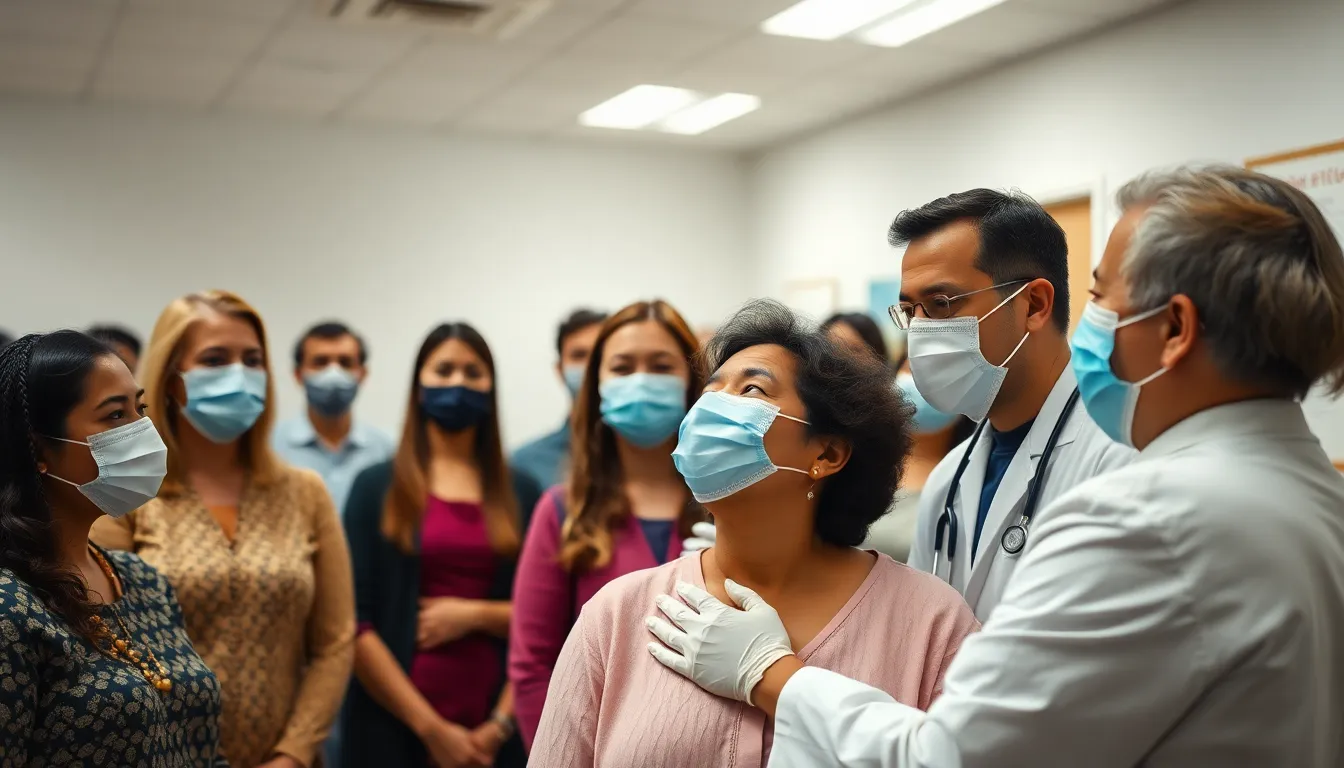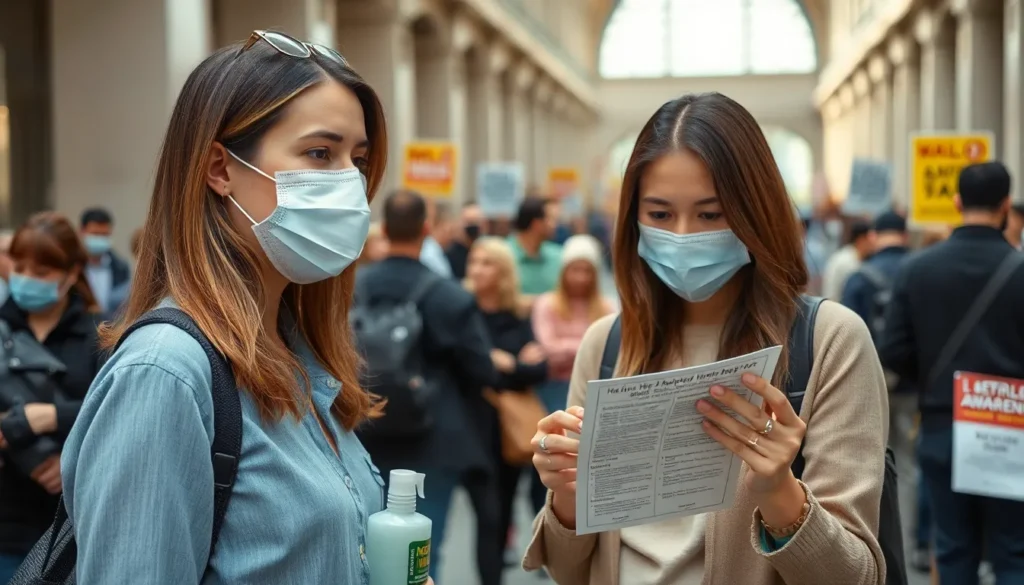Table of Contents
ToggleAs 2024 kicks off, the world finds itself facing a new viral contender that’s making headlines—and not the good kind. This isn’t just another “common cold” trying to crash the party; it’s the latest in a series of unwelcome guests that’s got everyone buzzing. With symptoms that range from the mildly annoying to the downright bizarre, it’s clear this virus is ready to make its mark.
Overview of the New Virus Going Around 2024
The new virus emerging in early 2024 is attracting considerable scrutiny due to its diverse symptoms and potential health implications. Health officials emphasize the importance of understanding its characteristics and transmission methods to mitigate its spread.
Characteristics of the Virus
This virus exhibits a range of symptoms, including fever, cough, fatigue, and unusual gastrointestinal issues. Distinctive features, such as rapid onset and variations in symptom severity, differentiate it from common cold infections. Reports indicate that some individuals experience neurological symptoms, raising concerns among health experts. Surveillance data show that symptoms evolve rapidly within affected populations. Various age groups display differing levels of susceptibility, highlighting the need for targeted interventions.
Transmission Methods
Virus transmission occurs primarily through respiratory droplets when an infected person coughs or sneezes. Surface contamination remains another significant concern, as contact with infected surfaces can lead to infection. Airborne transmission has also been documented in crowded settings, increasing the virus’s reach. Social gatherings and closed environments serve as hotspots for spread. Adhering to preventive measures reduces the risk of contracting or transmitting the virus.
Symptoms and Health Impact

Understanding the symptoms and health impact of the new virus is crucial for effective response and prevention. This virus presents a range of symptoms that can lead to varying health outcomes.
Common Symptoms
Fever frequently manifests in those infected, serving as a common initial sign. Cough often follows, accompanied by significant fatigue. Gastrointestinal issues such as nausea, vomiting, and diarrhea are reported more often compared to typical colds. Unusual neurological symptoms also appear, including confusion or headaches in many cases. With such diverse symptoms, individuals may experience a combination rather than a single indication, complicating diagnosis. Health officials emphasize recognizing these signs early to prevent further transmission.
Severe Health Risks
Risk of severe health complications becomes apparent in certain populations, especially older adults and those with underlying conditions. Hospitalization rates increase significantly among patients exhibiting severe respiratory distress. Long-term health effects, such as fatigue and cognitive impairment, pose additional concerns for recovery. Data suggests that some individuals develop complications, like pneumonia, which may lead to intensive care needs. Monitoring vulnerable age groups remains critical to avert widespread critical illness associated with this virus.
Preventive Measures
Preventive measures are essential to curb the spread of the new virus circulating in 2024. Health officials advocate for a multi-faceted approach, focusing on vaccination and hygiene practices.
Vaccination Efforts
Vaccination efforts are crucial in limiting the virus’s spread. Health authorities are working to develop and distribute effective vaccines rapidly. Clinical trials target various demographics to ensure broad efficacy, especially for vulnerable populations. Community programs promote vaccination awareness, emphasizing its role in preventing severe illness. Coverage of at least 70 percent is necessary to achieve herd immunity, significantly reducing transmission rates.
Personal Hygiene Practices
Personal hygiene practices play a vital role in minimizing transmission risk. Regular handwashing with soap and water for at least 20 seconds helps eliminate pathogens. Using hand sanitizer with at least 60 percent alcohol is an effective alternative when soap isn’t available. Wearing masks in crowded or enclosed spaces provides a barrier against respiratory droplets. Avoiding close contact with infected individuals and staying home when sick are also important steps. Frequent disinfecting of surfaces minimizes the risk of indirect transmission. By adopting these practices, individuals contribute to the overall safety of communities.
Public Response and Awareness
Public response to the new virus in early 2024 highlights a collective understanding of its potential risks. Health authorities, along with the government, are taking decisive actions to curb transmission and protect public health.
Government Actions
Government agencies are implementing protocols aimed at monitoring outbreaks. Rapid response teams are deployed to areas experiencing significant case spikes. Funding has increased for healthcare facilities to enhance their capacity and preparedness. Officials promote widespread vaccination campaigns, targeting at least 70 percent coverage to establish herd immunity. They’re actively working to secure vaccine supplies and ensure equitable distribution across demographics. Additionally, public health messaging emphasizes preventive practices, encouraging residents to stay informed and vigilant.
Community Initiatives
Community initiatives are vital in raising awareness and promoting health safety. Local organizations organize educational workshops outlining symptoms, transmission methods, and preventive measures. Schools host informational sessions, teaching students about hygiene practices essential for minimizing spread. Outreach programs focus on vulnerable populations, ensuring they have access to vaccinations and resources. Neighborhood groups coordinate volunteer efforts, providing support for those in isolation due to illness. Social media campaigns amplify these efforts, reaching broader audiences and fostering collective action.
The emergence of this new virus in 2024 underscores the importance of vigilance and proactive measures. As symptoms evolve and transmission patterns become clearer, communities must stay informed and adapt accordingly.
Health officials are emphasizing the significance of vaccination and hygiene practices to protect vulnerable populations. By fostering a culture of awareness and collective responsibility, individuals can play a crucial role in mitigating the virus’s impact.
As the situation develops, ongoing communication and education will remain essential. It’s vital for everyone to engage in preventive measures and support local initiatives aimed at safeguarding public health. Together, communities can navigate this challenge effectively.



